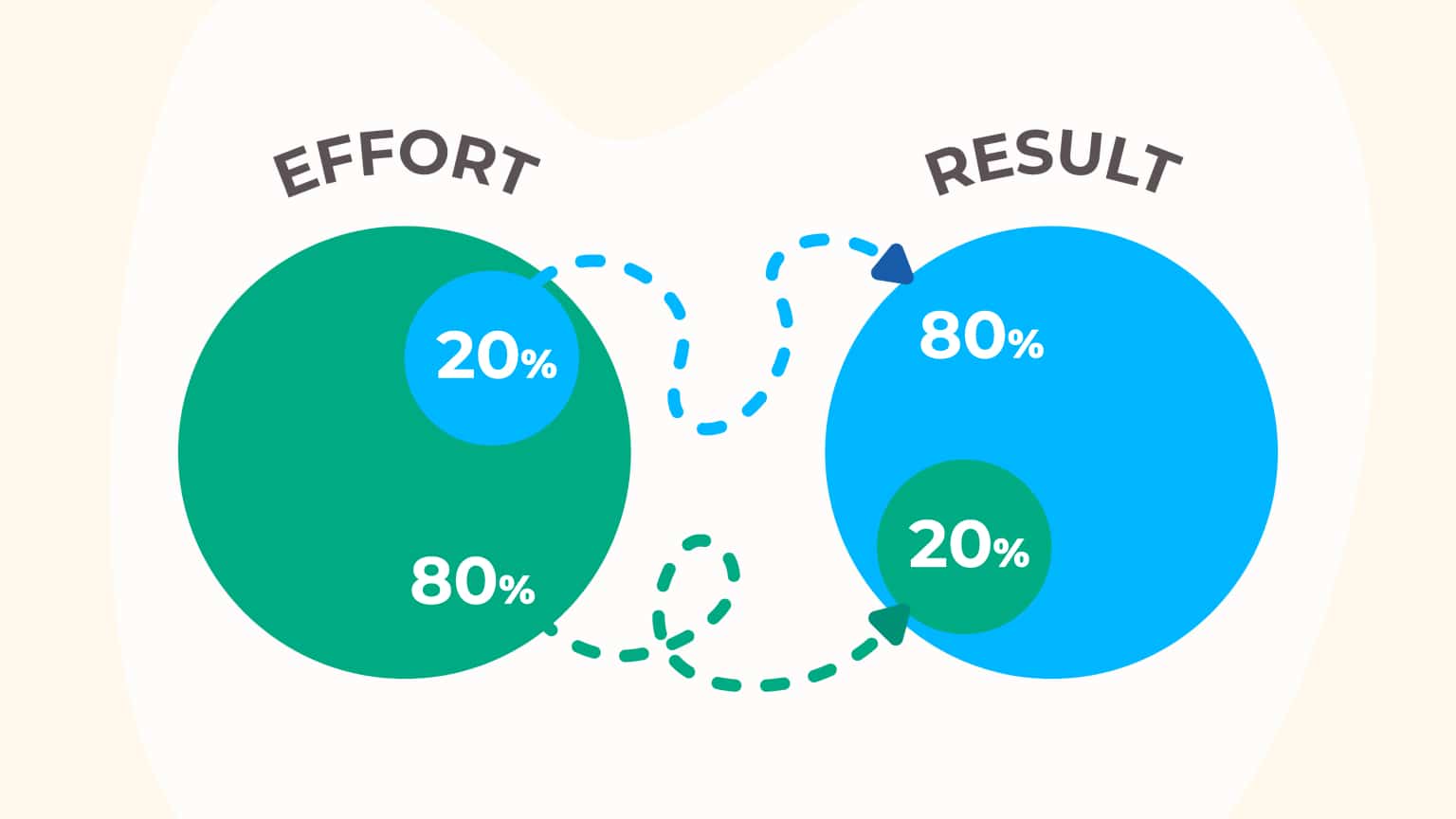Week after week you check off every last item on your to-do list but you still don’t have a lot to show for it – besides countless hours of overtime. Sound familiar? Then it’s time to change your strategy. With the Pareto Principle you can reduce your workload and become more successful. In this article, you’ll learn what the 80/20 rule is all about and how you can use this principle to your advantage.
The Pareto Principle is a simple rule that helps us to manage our time better. The 80/20 rule states that 80% of results can be achieved through 20% of our efforts. There’s a simple idea behind this: prioritize tasks and let go of perfectionism. This way you can achieve more in less time. In this article, we’ll explain how this common technique works and how you can incorporate it into your daily working routine.
How to use the Pareto Principle
Many of us struggle to get our priorities straight – at least at work. It’s often much easier in our private lives. Imagine situations like these:
- Cleaning up: An unexpected visitor is arriving this evening and you need to quickly clean up. Obviously, you’ll start with the most important things, like the unwashed dishes in your sink, rather than cleaning out your draws.
- Finances: You’re paying your monthly bills. When doing this you’ll start with the biggest and most important expenses, like your rent, rather than your newspaper subscription.
- Friendships: All of us have a circle of close friends, as well as more distant friends and acquaintances. 80% of the time you’re in contact with 20% of these people.
As you can see, in our private lives we’re often abiding by the Pareto Rule – it just seems like the most logical thing to do. Because if, for example, we expected ourselves to clean our entire homes, including all the windows, whenever anybody dropped by, we’d soon wear ourselves out.
So, why do we find this so difficult at work? In our working lives, it often seems like every task that is given to us is equally important, but we should be asking ourselves more often: what am I accomplishing here? Which of these tasks is going to have the most impact on my company or organization?
By asking yourself these questions, you can rank your tasks in order of importance and achieve maximum impact for your team. Are you finding it hard to decide which tasks are really important and which are not? If your company works with OKRs, you can use these goals or the company’s mission as a guide.
Tips for the decision-making process
- Identify the biggest problem that your team is currently facing. What could be some possible solutions? You can use the Five Whys Method here.
- Organize your problems into groups. Maybe several of these problems have the same solution.
- Now add a value to each problem. You can use a school grading system or actual monetary figures from the company budget.
- When you’ve done that, you’ll easily be able to recognize which problems fall into that all-important 20% and come up with solutions accordingly.
These problems will often have an impact on other teams or departments within the company. By prioritizing these and finding a solution, you’ll increase your own success rate and you’ll start your next working day feeling more motivated.





